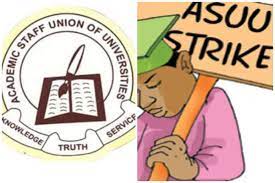Photojournalism – Good Practice Guidelines
Photojournalists operate as trustees of the public. Their photos are used as accurate and trustworthy accounts of significant events. Their primary goal is the faithful and comprehensive depiction of the subject at hand. As photojournalists, they have the responsibility to document society and to preserve its history through their photos.
Photojournalism is facing some new challenges. Everyone is a photographer these days, it would seem. The rise of citizen photojournalism, encouraged by newspapers asking their readers to send in their newsworthy pictures for publication puts the trustworthiness of published photos into question. Recently, the New York Times photo editor, Michele McNally, commented on amateur news photos coming out of Iran, stating that:
“I am indeed troubled by not knowing the sources of these pictures and their agendas […] and the validity of the captions.”
At the same time, citizen photojournalists allowing free use of their photos is making it tempting for news organizations to save money by cutting down their staff of professional photojournalists. But even some of the professional photojournalists have contributed to the demise of the profession. We continue to see examples of esteemed photojournalists falling to the temptation of digitally manipulating their photos. They might be few, but they discredit the entire profession. It is now easier than ever to add or remove objects from a photo, using image editing software such as Photoshop, but long careers have gone down the drain this way.
With this in mind, I think it is important for every photojournalist, professional or amateur, to know what you can and can’t do in photojournalism. To have some good practice guidelines. I have put together the following list using sources such as Reuters, New York Times (NYT) and the US National Press Photographers Association (NPPA). References can be found at the bottom of this article.
In General
Images that purport to depict reality must be genuine in every way (NYT). Materially altering a picture in Photoshop or any other image editing software will lead to dismissal. (Reuters). Be faithful and comprehensive in your depiction of the subject at hand (NPPA). This is to strengthen public confidence in the profession (NPPA) and to uphold journalistic integrity and not mislead the viewer (Reuters).
Never Do This
There’s 3 things that you just don’t do as a photojournalist. If you only remember 3 things from this article, let it be this.
- Don’t add or remove anything in the photo (fabrication). Neither by re-arranging things in front of the camera nor by changing a photo in post processing.
- Don’t stage or re-enact news events such as directing the subjects of a photo. Exceptions are portraits and product photos, but caption must not mislead the viewer into believing these photos are spontaneous.
- Don’t use excessive color manipulation, lightening, darkening or blurring of the image in post processing.
Good Practice
Instead, there is a set of long-standing good practices that photojournalists should strive to meet. In short, be truthful and respectful! But if you want more detail, these are some of the points that the mentioned sources emphasize:
- Caption only what you have witnessed. Exact, to the point, without speculations. Double-check all your facts when writing the who, when, where, what and why.
- The presence of the media can often influence how subjects behave. When the behavior shown is the result of the medias presence, captions must make that clear.
- Seek a diversity of viewpoints and work to show unpopular or unnoticed points of view.
- Treat all subjects with respect and dignity. Give special consideration to vulnerable subjects and compassion to victims of crime or tragedy.
- Avoid stereotyping individuals and groups.
- Recognize and work to avoid presenting your own biases in the work.
- Intrude on private moments of grief only when the public has an overriding and justifiable need to see.
- Do not pay sources or subjects or reward them materially for information or participation.
- Do not accept gifts, favors or compensation from those who might seek to influence your coverage.
- Do not intentionally sabotage the efforts of other photojournalists.
The Gray Zone
To some extent, it is a subjective matter how far photojournalists can go in their “interpretation” of events. Some of the “illegal” effects mentioned above can almost be achieved with legal means. For instance, photojournalists shouldn’t darken an image in post-processing to obscure objects in the photo – but at the same time it’s considered acceptable to underexpose the photo, zoom in or shoot from an angle so that objects aren’t included in the photo! This is why guidelines like these keeps coming up for debate. Some photojournalists are more purists than others and so, there is a gray zone. Decide for yourself, are the following practices acceptable?
- Using extreme lenses such as long telephoto lenses, wide-angle / fish-eye lenses and tilt/shift lenses, effectively distorting the “perspective”.
- Correcting lens distortion in post-processing.
- Using a shallow depth-of-field, causing foreground and background blur way beyond what our eyes see.
- Using flash, thereby creating a light that wasn’t there.
- Using polarizer filters and other “effect” filters.
- Publishers cropping a photo without “permission” from the photographer.
- Selective masking / tone mapping in photo editing software.
I hope this list will contribute to upholding professional standards and create some fruitful thoughts and debate!
Online Sources:
Reuters’ guidelines for the use of Photoshop.
New York Times’ ethical guidelines for photography and mages.
US National Press Photographers Association (NPPA) Code of Ethics.
Source by Morten Svenningsen




